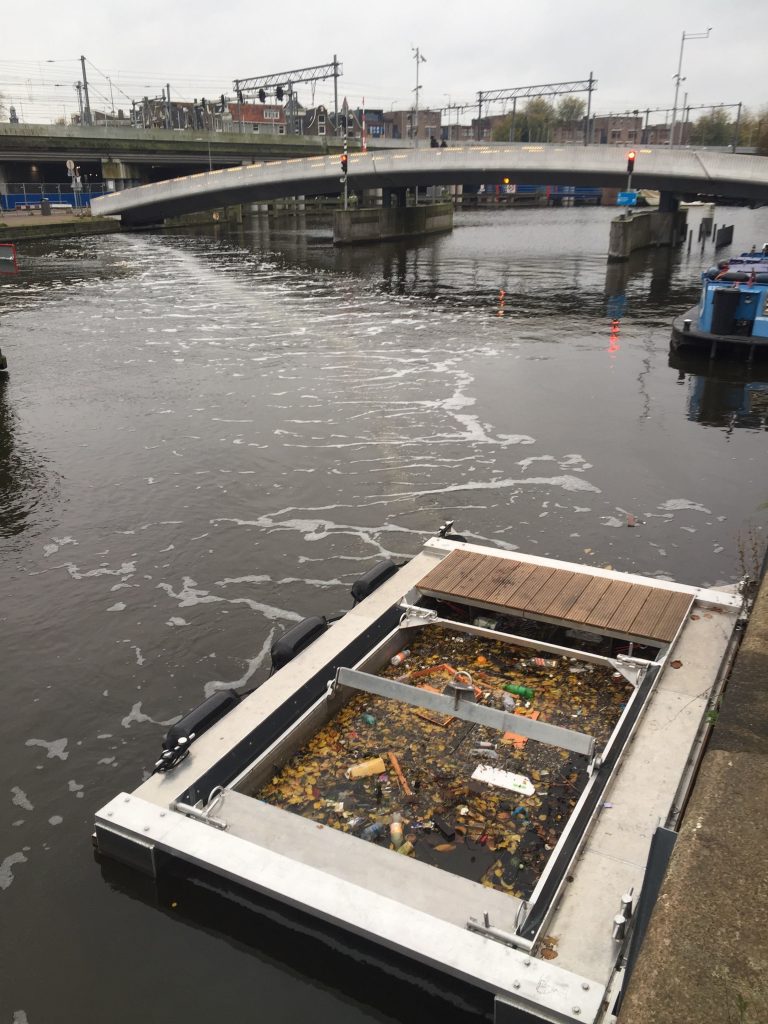A Dutch startup employs air bubbles to extract plastic from rivers.
4 min read
Dutch startup “The Great Bubble Barrier” has been building “air curtains” and removing tons of plastic from rivers since 2017. The technology is simple and promising. With the help of pipes in the water, a curtain of air is formed. Fish and other river dwellers can swim through it, while plastic waste is intercepted.
The startup from Amsterdam has spent seven years developing the technology for the “bubble barrier.” They began conducting pilot tests in spring 2017 and implemented the first filter system on the River IJssel in the Netherlands in November of that year. This system is capable of retrieving even the tiniest plastic fragments measuring one millimeter in diameter from the water. The startup is currently experimenting to determine if the air barrier can filter out even smaller plastic particles, specifically those less than 0.05 millimeters in size.
Simple technology, clean rivers, healthy people
The functioning of the air barrier is straightforward. Air is pumped into the water through pipes located at the base of a river or canal. This, along with the flow of the water, causes the plastic pollution to gather on a single side of the bank. Subsequently, the collected plastic is directed towards a system for collection. The waste is then sorted and can be appropriately disposed of. The innovation developed by the start-up could also be beneficial in countries other than the Netherlands, as Austria’s rivers are similarly plagued by trash.
According to the WWF, nearly 66% of Austria’s water bodies require restoration. The report mentions that only 15% of the waters are currently classified as being in “excellent” condition. The pollution is attributed to factors like high construction activity in certain areas and the industrial utilization of rivers for activities such as sewage disposal and cargo shipping. Gewessler, the Environment Minister from the Green Party, expressed concerns about the contamination of the environment and water bodies. However, the interim report on the progress of the “Action Plan Microplastics” is still awaited.

Nearly 80 percent of plastic pollution in the sea comes from rivers
The technology developed in Holland shows potential for not only purifying freshwater streams, but also aiding in the purification of oceans. Rivers are responsible for approximately 80 percent of the plastic found in the world’s oceans. Presently, it is believed that there are between 100 and 150 million tons of waste present in the oceans, with plastic accounting for over three-quarters of this amount. Annually, rivers transport an additional five to thirteen million tons of trash into the seas, with four million tons originating from only ten major rivers.
“The Great Bubble Barrier founders report that over a six-month duration in Amsterdam, they successfully extracted approximately 85 kilograms of plastic from the water on a monthly basis.”
Over the course of a year, this amounts to over a ton of plastic waste. This is beneficial not only for the environment but also for individuals. The waste does not remain solely in the water, as fish and other marine creatures consume the plastic pollution. Consequently, these pollutants reenter the human body through food, potentially causing hormonal changes due to the presence of microplastics. The air curtain technology from the Netherlands appears to offer the potential for clean oceans, an undisturbed environment, and improved human health.



